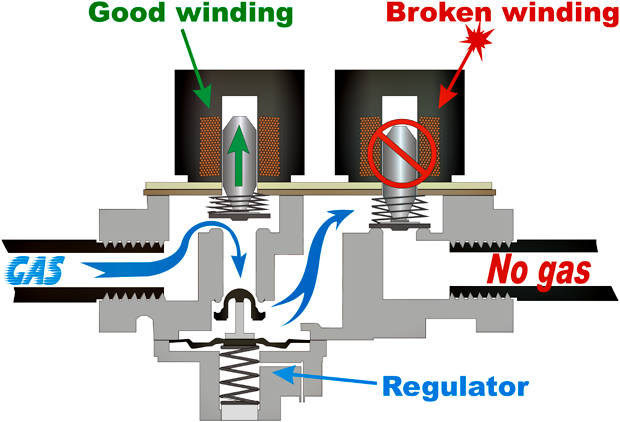Gas Valve Information
Inside the gas valve
| Furnace gas valves typically have two actuators; the first valve
lets the fuel into the valve body where it then goes through the regulator to
the second valve and on to the gas orifice. Both of the valves must be working
simultaneously in order for the fuel to get to the orifice. When a gas valve
actuates, you can hear a definite clunk or click sound. If one of the valves
refuses to open, you will still hear the sound but get no fuel to the rest of
the unit. The illustration below shows the flow of fuel through the first valve
and regulator.A broken coil in the second valves actuator renders the valve
incapable of delivering the necessary fuel for ignition. If either coil is
damaged the valve will not work. Note: It is also possible for the valve coils to test OK and have one or both of the valves be physically stuck. |

Testing the actuator coils
| Test the coils with an ohmmeter with the wires disconnected (you
only need to disconnect one wire on each coil) and you should get around 40-60
Ohms resistance at the two leads of each coil. If the meter reads much lower or
much higher then the coil is bad and needs to be replaced. Important note: As you know, a coil can work fine at one temperature and then fail intermittently when its temperature raises or lowers making it difficult to diagnose the problem. |

